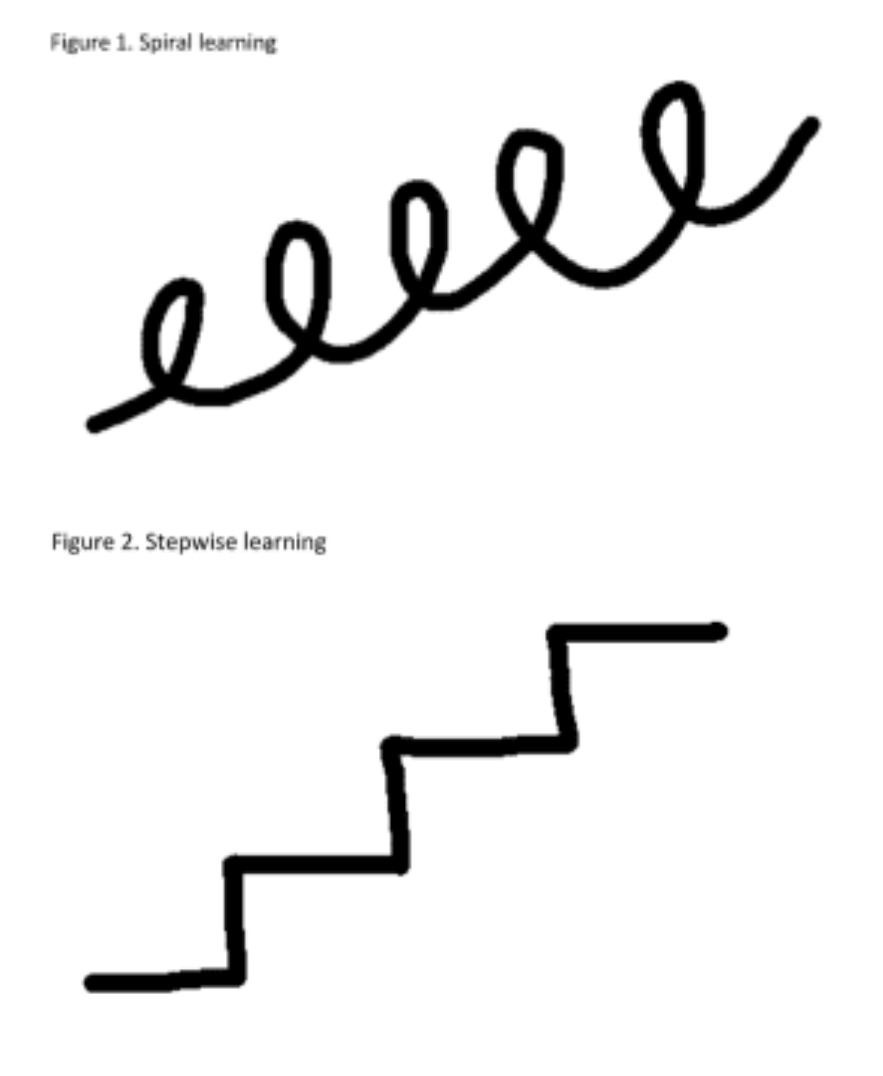Our method books, lesson plans and assessment tools in music education are all built around one thing—progress. Students learn a concept, implement it, and then move on to the next, more challenging task. But what about neurodivergent learners whose learning pattern may not be so linear?
For many students with exceptionalities, we need to take a spiral approach to teaching (see figure 1), rather than a stepwise approach with steady upward motion (see figure 2). This means that rather than learning a concept and moving on to the next, we may need to spend more time on a concept to ensure fluency (perhaps finding supplemental material rather than moving on to the next piece in the method book), or continually review learned concepts to make sure that they are still understood and are being incorporated into the new learned skills. This should be expected when teaching certain students with exceptionalities.

Aside from this expectation of continual review and additional activities to learn concepts, there may also be times when your student plateaus, or even regresses. The reasons for this are complex and varied. What is important to note is that it does not mean that the student cannot continue to learn music, only that they may need to return to previously learned concepts or continue to work at the same level until they are ready to move on. As adaptive music teachers, we need to have strategies to be able to maintain continued engagement even when the student is not gaining new skills or exploring new concepts. Here are some suggestions:
1. If you are using a method book, use supplemental materials at the same level to allow the student to learn new pieces while continuing to work on the same skills. This will avoid having the student feel demotivated by not progressing in their book.
2. Find games or activities that work on the concepts being reviewed. For example, if the student is struggling to get comfortable with a finger position on their instrument and not able to move on until it is fluently learned, do fingerplays or short speed drills to develop the needed skills. Make these activities as fun as possible to encourage the student to put this extra time into developing a skill that may be challenging for them.
3. Review old pieces that work on the same concepts, but incorporate new challenges like memorizing or incorporating improvisation to keep them engaging.
Remember that this is normal and there is no reason to be discouraged. Our role as music educators is to meet our students where they are and facilitate learning through music engagement. We can continue to do that, even in times when learning is happening more slowly. And we can have fun doing it!
Happy teaching!




